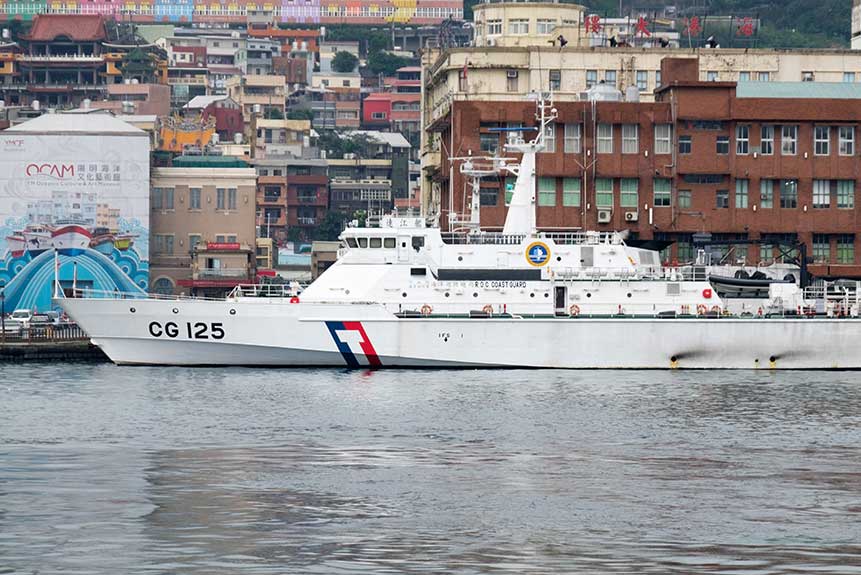
Taiwan Suspects Chinese Ship of Cutting Undersea Data Cables
by Dodge Billingsley
“China has a long history of sabotaging Taiwanese infrastructure using maritime tactics.”
According to the excerpted article from Taiwan-based Taipei Times, on 3 January, an undersea data cable near Taiwan’s Keeling Harbor was cut by “a Chinese freighter,” the Shunxin-39. Upon the alert that the cable had been cut, Taiwan’s Coast Guard Administration (CGA) intercepted the Shunxin-39 north of where the incident took place, demanding that the ship return to Taiwan for inspection. However, the CGA was unable to detain the ship. The incident is the latest suspected cable-cutting incident by ships thought to be affiliated with China but flagged in African countries. The article notes that the Shunxin-39 was flagged out of Cameroon.
The Taipei Times article also notes this is not the first time Chinese vessels have been suspected of sabotaging or cutting Taiwan’s undersea cables, noting, “China has a long history of sabotaging Taiwanese infrastructure using maritime tactics.” A tweet on Special Taiwan on X noted that this was the 21st time Chinese ships have cut Taiwanese undersea cables. However, the tweet did not provide any evidence to support this number of incidents. The tweet also referred to the incident as a “grey zone warfare tactic,” a term widely used to describe sabotage or obstruction without crossing the threshold of armed aggression.[i] Still, as the number of undersea cable-cutting incidents continue to rise, these acts of sabotage should be considered capable of leading to military conflict.[ii]
Sources:
Fang Wei-li and Jake Chung, “Chinese ship cuts cable near Keelung Harbor, Taipei Times. 5 January 2025. https://www.taipeitimes.com/News/taiwan/archives/2025/01/05/2003829674
The Coast Guard Administration (CGA) and Chunghwa Telecom yesterday confirmed that an international undersea cable near Keelung Harbor had been cut by a Chinese ship, the Shunxin-39, a freighter registered in Cameroon.
Chunghwa Telecom said the cable had its own backup equipment, and the incident would not affect telecommunications within Taiwan.
The CGA said it dispatched a ship under its first fleet after receiving word of the incident and located the Shunxin-39 7 nautical miles (13km) north of Yehliu (野柳) at about 4:40pm on Friday.
The CGA demanded that the Shunxin-39 return to seas closer to Keelung Harbor for investigation over the issue, adding that it has forwarded all evidence and statements to prosecutors.
Kuma Academy chief executive officer Ho Cheng-hui (何澄輝) said yesterday that while the incident was pending investigation, China has a long history of sabotaging Taiwanese infrastructure using maritime tactics.
Ho said that the incident was a Chinese ploy to gauge the point at which the international community would draw a red line in an attempt to escalate its “gray zone” tactics.
Ho said such tactics were one reason Taiwan is working to launch its own low and medium Earth orbit satellites and increase telecom resilience.
Special Taiwan @TaiwanSpecial, on X (formerly Twitter), 5 January 2025. https://x.com/TaiwanSpecial/status/1876104109390287285
In what might be a China grey zone warfare tactic against Taiwan, a Cameroonian registered freighter with a Chinese name SHUNXIN39 cut a Chunghwa Telecom undersea cable off Taiwan’s north coast on Saturday. This is the 21st time Chinese ships have cut Taiwanese undersea cables.
Notes:
[i] In the wake of a spat of suspected cable cutting by China, U.S. based Newsweek reported that Chinese scientists may have been trying to standardize undersea cable sabotage. See: “Exclusive—Chinese Patents Reveal Aim to Cut Undersea Cables,” Newsweek, 10 January 2025. https://www.newsweek.com/china-conflict-undersea-cables-cutting-internet-data-subsea-marine-baltic-taiwan-2012396
[ii] See: Dodge Billingsley, “Potential Flashpoint Stemming From Undersea Data Cable Network Access Restrictions,” OE Watch, 06-2024. https://fmso.tradoc.army.mil/2024/potential-flashpoint-stemming-from-undersea-data-cable-network-access-restrictions/; and Dodge Billingsley, “Damage to Undersea Cables in Baltic Hint at China – Russia Collusion,” OE Watch, 01-2025. URL PENDING
Image Information:
Image: A Taiwanese Coast Guard patrol and rescue ship, the Lian Jiang, is moored in front of the Customs Building on the west bank of Keelung Port.
Source: https://commons.wikimedia.org/wiki/File:CG_125_Lienchiang_shipped_in_Keelung_20170309.jpg
Attribution: CC0 1.0
Distribution A: Approved for public release
Categories:
Tags:







